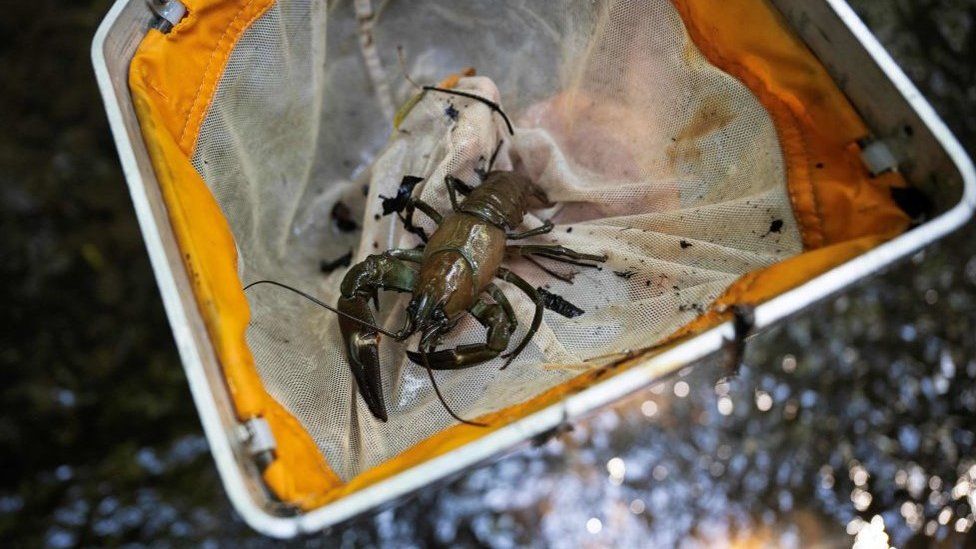North York Moors: Invasive crayfish seen in River Esk
- Published

An "established population" of invasive crayfish have been found in the North York Moors National Park.
Biosecurity signs have been installed along the banks of the River Esk, the Environment Agency (EA) said.
Non-native signal crayfish were spotted by fisheries enforcement patrols.
The crustaceans damage the ecology of rivers and threaten the future of native species, particularly the Esk's unique population of freshwater pearl mussel, the agency said.
EA spokesperson Allison Pierre said: "Signal crayfish threaten the biodiversity of our rivers by reducing water quality and impacting on habitat.
"We are carefully monitoring the population on the Esk, which could impact on the native freshwater pearl mussel, which is a very rare and endangered species and the Esk has the only remaining population in Yorkshire."
Environment Agency advice
The agency has issued the following advice for stopping the spread of non-native crayfish:
- Check your equipment, boat, clothing and footwear after leaving the water for mud, aquatic animals and plant material. Remove anything you find and leave it at the site
- Clean everything thoroughly as soon as you can, paying attention to areas that are damp or hard to access. Use hot water if possible
- Dry everything for as long as you can before using elsewhere as some invasive plants and animals can survive for over two weeks in damp conditions
- Do not remove any crayfish from the river. Handling signal crayfish, taking then out of the water or moving them to another location increases the risk of introducing them to new areas.
Following the discovery of the crayfish, the EA said "extensive surveys" had confirmed an established population in the River Esk, which flows 28 miles (45km) through North Yorkshire and enters the North Sea at Whitby.
Alexandra Cripps, rivers programme manager at the North York Moors National Park Authority, urged river users to follow the EA advice, warning invasive species can have "a devastating impact" on rivers environments.
Anyone who spots a signal crayfish, alive or dead, is asked to take a photograph and contact Environment Agency.
Follow BBC Yorkshire on Facebook, X (formerly Twitter) and Instagram. Send your story ideas to [email protected].
Related Topics
- Published23 May 2023
- Published9 November 2023
- Published1 August 2023